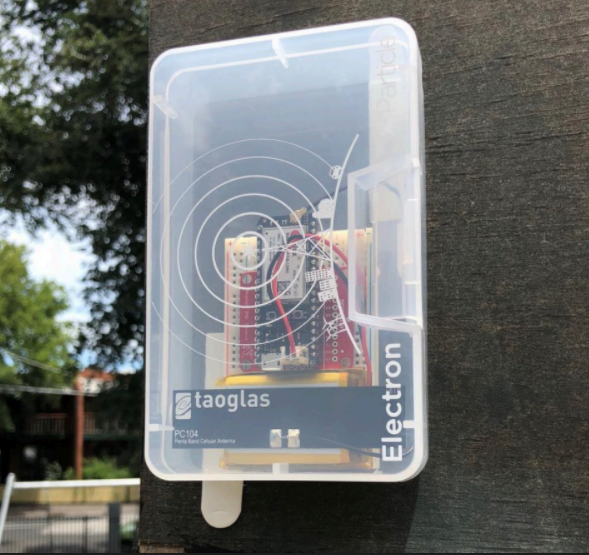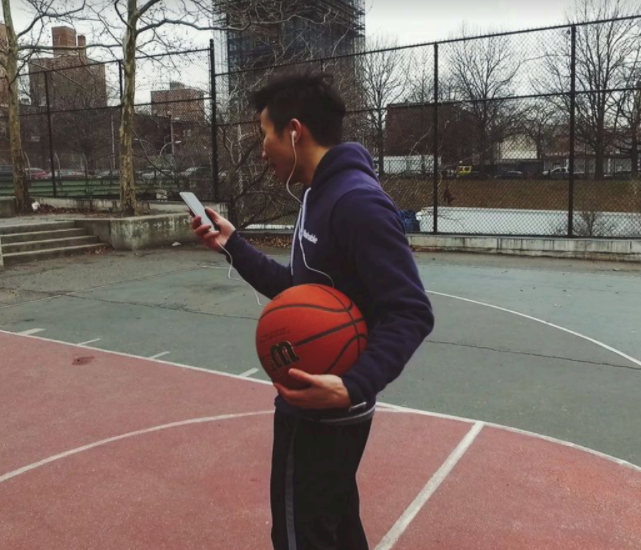Melbourne start-up enabling smart cities to track open sporting space usage
Swish. Basketball players will tell you there is no better sound than the swish of a net on a made shot. For Alex Wood the sound ignited a passion project to revive his local basketball courts that had become rundown and unpopular in the community.
Along with his brother, Alex founded Nothing But Net in 2014 as a platform to advocate for upgrades to council-owned outdoor basketball courts across Melbourne. It started with one simple goal: hanging a net on every hoop in the Bayside council. As nets went up the data supported his own experiences, and players of all ages re-introduced themselves to their local courts to hear the swish they had been longing for.
Combining his passion for making sport more accessible with his digital acumen led to the development of the Nothing But Net app, allowing users to locate outdoor hoops in their region and share their favourites with the community.
But it is Alex’s latest innovation that takes Nothing But Net’s aim to make grassroots basketball more accessible and enjoyable for young players to a new level, helping communities to improve facilities by monitoring and measuring court utilisation .
Connected Courts
Connected Courts uses accelerometry devices to track casual usage of outdoor basketball courts, providing governments with daily insights on the recreational activity occurring in public spaces. The IoT (Internet of Things) system enters the arena during an important period for Australian sport. Outdoor recreational space planning is becoming increasingly important due to: 1) a societal trend favouring casual and informal forms of sport participation and 2) public health restrictions on indoor facility usage due to COVID-19.
The Connected Courts device allows for tracking of public basketball court usage (via Nothing But Net).
Supporting investment in sport and active recreation
According to Alex, the ability to segment usage data according to weather, session length, and time of day enables councils to make informed decisions regarding recreation infrastructure development.
“Business cases for new outdoor courts as well as investment towards shelters, toilets and lighting for existing courts can be validated by Connected Courts, effectively guiding government investment to where communities need them most.”
Dashboard view of Connected Courts summarising daily court usage for decision-makers.
A community engagement tool
For many years sport and government industries have been seeking ways to engage with casual sport participants, for whom many do not understand where or how to become involved with local sporting clubs. Connected Courts allows for communications to be pushed to the phones of court users, holding the potential to link players with local sporting clubs and deliver rewards for local health promotion initiatives.
“We hope that in the long-term, Connected Courts leads to improvements in the accessibility and quality of outdoor infrastructure for kids who aren’t participating in organised leagues.” Alex Wood
Expansion to other sports and facilities
Connected Courts has been developed initially for basketball courts, although the vibration-based technology holds great potential as a scalable solution across a variety of public spaces including tennis courts, volleyball courts, and football fields.
And whilst the Connected Courts technology could be applied to indoor facilities, Alex says the access management of these facilities makes solutions such as RFID turnstiles a more appropriate solution. “Connected Courts sheds a light on the populations who don’t use traditional sport facilities, and guides infrastructure design that enables them to enjoy sport their way.”
More Information
At Forward Pivot we are rapt to see products emerge from the same passion for enhancing community sporting experiences that we share. The Connected Courts technology is currently being explored by several councils across Melbourne, any governments or organisations seeking information on installing Connected Courts within their municipality can reach out to Alex Wood directly here.
The precursor to Connected Courts, the Nothing But Net app
currently lists over 270 public outdoor basketball courts across Australia, New Zealand and France (oui!).




